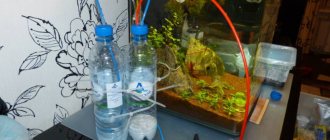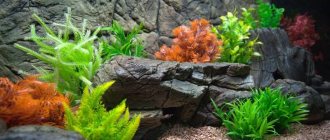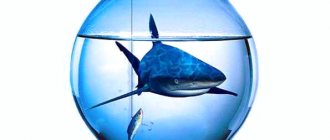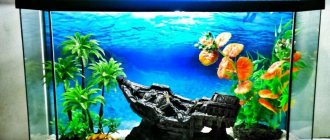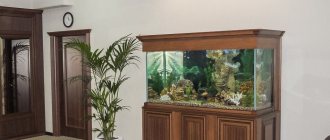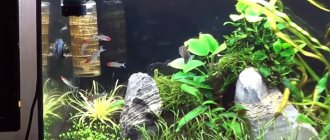This is the 3rd article in a series of articles about the magic of herbs.
- Part 1 – History of herbal magic.
- Part 2 – Where does plant energy come from?
- Part 3 – [You are here] The magic of herbs as something supernatural.
Many people think that all magic is supernatural. They simply forgot what they knew as children. The world is the dominance of forces, energy, and it is as normal as we ourselves. As a child, we could communicate with flowers, brownies, mermaids, and we saw miracles under every leaf. Having given in to the skepticism of adults, we have lost this gift, but this has not gone away. Magic is as real as the sun, the moon, the stars, and our own breath.
The magic of herbs and its patrons
"Spirits", "demons" and other creatures have nothing to do with herbal magic, unless you yourself want to summon them using witchcraft herbs. Nowadays those who practice magic do not follow any concepts and do not worship any deity.
Although if we talk about cultures where herbal magic was developed, then there was the concept of Gods who patronize herbs and trees, and of spirits living in the foliage.
The Slavs had such Gods:
- Svyatobor - patronized forests and thickets;
- The Goddess is Alive - to wild and human-cultivated plants;
- in addition, they revered the small God-spirit - Leshiy, with his wife Lesavka, children and subordinates - larch, berry, cone, mushroom and other small spirits.
Whether you read them or not is your choice.
Shapes and sizes
For beginner aquarists, tanks in the shape of a rectangular parallelepiped are more suitable.
There are also round options, but caring for them requires experience.
It is recommended to take tanks no more than 60 cm high, otherwise it will be difficult to care for the plants.
The standard length of a herbal aquarium is 120-150 cm, and the width is 40-80 cm.
Benefits of setting up a slow herbalist
In addition to the fact that the herbalist is easy to care for, it has another undeniable advantage - low cost of maintenance and upkeep. You practically eliminate the need for aquarium chemicals, and you also won’t spend money on carbon dioxide cylinders.
If you use mosses when decorating, then this is also a good saving on nutritious soil. And you will need low-power lamps, but correctly selected in terms of glow temperature, in order to ensure the slow but healthy development of plants and to avoid the appearance of algae.
It is better to use fluorescent lighting. Daylight hours in a slow herbalist are about 6 hours. With longer illumination (up to 10 hours), hard-leaved plants begin to become covered with an unwanted coating - beard, xinococcus, etc.
Construction instructions
Plants, like representatives of fauna, are demanding in creating optimal conditions for successful growth.
Therefore, when creating a herbal aquarium, you should properly organize the lighting and supply of carbon dioxide, and maintain the composition and temperature of the water.
Optimal lighting
The herbal aquarium should be equipped with lamps with a predominance of red and blue light spectra. The first is responsible for the growth and development of flora. Such lamps should be installed at the rear wall of the tank and in the center.
Blue spectrum lamps are placed at the front wall of the aquarium - flowering plants need them. In addition, it is necessary to use fluorescent lamps.
What should the temperature be?
In Dutch aquariums it is recommended to heat the water to +24…+25°C.
The higher the temperature of the liquid, the lower the solubility of gases. At +24°C there is a lot of carbon dioxide in the water during the day (for photosynthesis) and oxygen at night (for respiration).
The first helps plants accumulate nutrients in their bodies, and the second helps to oxidize harmful nitrogen compounds (ammonium and ammonia).
Therefore, if the water temperature is above +25°C, the solubility of gases will decrease and harmful substances will begin to accumulate in the aquarium.
The required level of liquid temperature in the herbalist is maintained using a thermostat.
The device heats the water to the set value and then turns off. When the water begins to cool, the thermostat automatically turns on.
Water and soil
The growth of plants in a herbal aquarium is greatly influenced by acidity (pH) and water hardness. The first indicator reflects the content of carbonic acid, which is partially formed when CO2 dissolves. The more of this gas in water, the lower the acidity. A pH of 6-7 is suitable for most plants.
There are 2 types of hardness:
- Carbonate. Shows the amount of calcium and magnesium carbonates dissolved in water. The optimal level is 3-6°.
- General. Shows the content of calcium and magnesium ions. The optimal indicator is 4°.
The following requirements apply to soil for aquarium plants:
- Looseness to allow air and water to circulate between soil particles.
- Chemical inertness, i.e. the soil should not release substances into the water or bind existing ones.
- Buffer capacity is the ability to maintain the required level of acidity.
- Nutritional value, or the content of the necessary supply of micro- and macroelements.
What kind of fertilizer should it be?
Most often, aquarium plants get sick due to a lack of potassium, nitrogen, manganese, calcium and iron. To compensate for the lack of these elements, special fertilizers for aquarium plants should be added to the herbalist.
The following types of drugs are available:
Tablets. They are placed in the soil closer to the roots of the weakest plants. The dosage can be found in the manufacturer's instructions. Tablet fertilizers produce the following effect:
- restore the iron content in water and plants, promote their rapid growth;
- suppress the activity of algae;
- restore soil microflora.
Rod-shaped. The dosage depends on the volume of the tank: take 1 g of sticks per 1 liter of water and mix with soil.
The fertilizer restores the iron content and provides a nutrient medium for a long time.
At the same time, it does not harm fish and other inhabitants of the aquarium.
- In the form of balls. Enrich soil and water with iron and other nutrients. The dosage depends on the amount of flora. Take 1 or 2 balls and bury them in the ground. The procedure is repeated after a year.
- Liquid. Suitable for all types of aquatic plants. Liquid fertilizers contain not only iron, but also potassium, iodine, manganese and other elements. The dosage can be found in the instructions.
Herbalist Filtration
The circulation of water carried out by filters is important for plants for the following reasons:
- Improves carbon dioxide consumption.
- Eliminates areas of stagnant water among densely growing plants. This ensures proper micronutrient intake
- Purifies water from suspended particles.
For an aquarium herbalist, experts recommend using external filtering equipment, since it does not block the lighting for plants and does not spoil the design.
Before installing the device, you must study the step-by-step instructions provided by the manufacturer.
Master Class. Ecological toy – DIY grasshopper
Author of the master class: Elena Alekseevna Titaeva, teacher at MBDOU “Kindergarten No. 8 “Firefly” p. Panfilovo".
This master class is intended for teachers and parents.
The presented work is a unique ecological toy, made by hand. Its highlight is that you water it with water and after a while, juicy, tender, thick grass begins to grow from its head, creating a very cool head of hair. It will be interesting for both you and your children to watch the process. After the grasshopper’s “hair” has grown a little, you can use it to create hairstyles, carefully trimming the grass the way you like best. Later it will definitely grow again. Moreover, green grass can be used to feed animals in this corner of nature.
Purpose of this craft : This toy will not only decorate your home and bring joy, but will also benefit those who have pets.
The purpose of the master class : dissemination and transfer of pedagogical experience, training in techniques for making an original toy - a herbalist.
Tasks:
— Improving the professional skills of teachers;
— Introducing teachers and parents to the techniques of making grass.
Progress:
“Tell me - I will forget,
Show me - I'll remember
Let me do this
And it will be mine forever.”
A person is always drawn to something new, unknown, and in everyday life, among the gray everyday life, we are looking for joy and celebration. I'm not an exception. I suggest you try it too! In honor of the first month of summer, let's make a unique environmental toy. I present to your attention a master class on making herbs!
To make a grasshopper we will need:
2. Cereal seeds (barley, wheat) or lawn grass seeds.
3. Nylon stockings, tights
6. Acrylic paints
7. Pieces of colored self-adhesive wallpaper
Step-by-step process for making herbal tea
Step 1. Let's start making our grass. First we will make the body. Cut off part of the stocking or tights as shown in the photo. For tightening, prepare small pieces of the same nylon. Tighten the end of the stocking with a piece of nylon.
Step 2 . Turn our base inside out so that the tail goes inside.
Step 3 . Now take a tablespoon and add the seeds. Distribute the seeds in the place where you plan for your grass to grow.
Step 4 . Now we fill the stocking with sawdust. We put more sawdust, we are not afraid to crush it so that more can fit.
Step 5 . These are the heavy bags we got.
Step 6 . When there is enough sawdust, we tie the tip of the stocking with a nylon trim and cut off the excess with scissors.
Step 7 . Now we begin to shape the future herbalist. It depends on your imagination. We separated a small amount of sawdust, made, for example, a spout, tied it, tightened it with trim and cut off the excess. And so whatever you want: noses, ears, paws...
Stages of starting an aquarium
The process of starting an herbalist from scratch begins with planning.
You need to take a sheet of paper and determine on it the placement of tall and short plants, decorative elements, etc.
You can contact designers for advice.
A special lava is used as a substrate, which is sold in pet stores.
Layers of nutritious and decorative soil are placed on top of it.
Decoration methods and water preparation
The composition of the aquarium before filling with water is called hardscape. This is the process of laying stones, driftwood and other decorative elements when designing the relief of a herbalist. In hardscape there should be no hint of artificiality: the designer arranges decorative elements according to natural rules and laws.
It is recommended to leave the water for the aquarium for at least a day to remove all impurities and warm it to room temperature.
Filling Features
Before pouring water into the aquarium, you need to place a plate in the tank so that the stream of water does not destroy the soil and substrate. After pouring, bacterial preparations can be added to the water to ensure a healthy biobalance.
Planting aquarium plants
When planting flora, you should adhere to the following recommendations:
- Place long-stemmed plants in the background and middle background, and low-growing plants in the foreground.
- Before planting, remove rotten leaves and trim the roots, leaving only 2-3 cm.
- Plant low-growing plants in wet soil, and then fill the tank with water a few centimeters, after which you can proceed to planting flora with long stems.
- Plant plants with red pigment in the most illuminated areas.
Installation of herbal aquarium
When installing a Dutch aquarium, professionals recommend following the following rules:
- The tank is placed where there is no direct sunlight. This place should be away from doors and passages.
- The aquarium should not be located in close proximity to heating appliances.
- The herbalist is installed on a special aquarium stand.
How to properly keep a herbal diary
Experienced traditional healers recommend using a regular notebook for notes.
It would be great if it was hardcover. Thus, it will be possible to protect valuable information from environmental influences. After all, healers often take their treasured notebooks with them when they go to forests and meadows for herbs.
A herbalist who loves his work turns his occupation into a real art. He beautifully designs a notebook for notes and includes relevant drawings, drawings and diagrams in it.
photo source: pinterest
Herbalists supplement the records with samples of medicinal or poisonous herbs, fruits and mushrooms. Under each of them there is a description and beneficial or dangerous properties of the plant.
Be sure to include information about when the herbs were collected.
The information will be useful when preparing a medicinal collection. Memory fails even experienced herbalists. In this case, the entries in the diary help out.
In herbal notebooks, specialists reflect their personal observations and experiences.
If you note some unusual property of a plant, be sure to indicate it in your diary.
The study of ancient herbalists' diaries has become a real discovery for modern homeopaths.
They were ready-made scientific works.
The records contained information about observations of the effect of the medicinal decoction, conclusions on improving the herbal drug, descriptions of prototypes and finished results.
Such information should be reflected in the diary of everyone who collects medicinal herbs.
If you are looking for information on how to be a beautiful herbalist, then, first of all, treat the matter with accuracy and responsibility.
Records must be concise, clear, and legible. It is possible that the information you collect will be useful to future generations. Based on the information, an effective, previously unknown medicine will be manufactured.
On the pages of our online portal about medicinal plants, we share our experience and make short infographics about the properties of each medicinal plant.
You can find information about medicinal herbs in the “HERBS BY ALPHABET” Section
Finally….
Even in ancient times they said that God created a rich plant world so that man could eat and be healed.
Herbalists are confident that there is no disease that cannot be cured with the help of herbal remedies.
Start your herbalism studies by studying the plant world, the characteristics of the human body and keeping a personal diary of observations.
Rules of care
Caring for the aquarium after planting the flora is as follows:
- Periodic addition of fertilizer.
- Change 20-50% of water every week.
- Control of carbon dioxide levels.
After planting the plants, it is not recommended to illuminate them too often. In the first week, the duration of daylight hours can be 5 hours, in the second week - 6 hours, in the third - 8 hours, etc.
Herbs for tea
Herbal teas can be consumed every day. Of course, if there are no contraindications. For example, peppermint interferes with conception. Those suffering from hypertension should not consume St. John's wort and licorice.
Try mixing lemon balm, lemongrass and rose hips. A very aromatic combination with a slight sedative effect.
You can add berries or tangerine peels to the herbs. Spices also go very well with teas. Also, leaves of fruit and berry crops are suitable for brewing. The main thing is that the components create a harmonious combination together. Too bright aromas interrupt each other.
Here are some interesting combinations: - Black currant and raspberry leaves with linden flowers and rowan berries. — Raspberry leaves, orange zest and cinnamon. — Chamomile, cherry leaf and dried apple. — Berries and leaves of black currant and rose hips. - Mint and cardamom. — Ginger root, mint and fireweed. This collection will invigorate well and helps cleanse the body of waste and toxins.
Number of fish in the aquarium
There is no exact formula that can be used to calculate how many fish to add to an aquarium.
The population density depends on many factors: the level of filtration, the frequency of water changes, etc., but one of the main ones is the size of the fish.
The table below provides some example calculations.
| Size (torso length) | Representatives | Features of settlement |
| Up to 4 cm | Neons, cardinals, rasboras, Endler's guppies | For 1 liter of water - 1 fish. Aquarium volume - more than 10 l |
| From 4 to 6 cm | Plaecilias, hassemanias, rhodostomuses, minors, thornets, guppies, barbs. | For 1.5 liters of water - 1 fish. Tank volume - more than 20 l |
| Up to 20 cm | Metis, angelfish, goldfish, gourami, rainbow fish, Malabar zebrafish | For 100 liters of water - 1 pair of fish. The larger the volume of the tank, the denser the population. Aquarium volume - more than 200 l |
| Up to 30 cm | Cichlids, Ctenopomas, Piranhas | The tank volume is more than 250 liters, then it can hold up to 5 fish |
What soil should not be used?
There are a number of substrates that cannot be placed on the bottom of the herbalist. These include:
- Natural chemically active soil. Despite its natural origin, such a substrate negatively affects water parameters and makes it impossible to maintain biobalance in the aquarium. Examples of chemically active soils are marble chips, coral sand, limestone, neutral soil with additional inclusions.
- Painted primer. Brightly colored granules often release toxic substances that spoil the water. They are dangerous for plants and all aquatic organisms. These may be carbonates that increase water hardness. Painted elements cause acidification of the soil or the formation of hydrogen sulfide as a result of anaerobic processes. In this case, we say that the soil is “phonic” with carbonates. The substrate can be contaminated with organic matter, ammonia, nitrates, and chemical compounds.
- Glass granules. A chemically neutral substrate, but its use in planted aquariums is unacceptable. The smooth surface of the glass does not allow nutrients and plant roots to be retained.
A normal ecosystem in an aquarium is impossible without high-quality soil that meets all requirements
When selecting a specific option, it is important to take into account the species of plants, fish and other inhabitants, the characteristics of their life activity and biological requirements
Inhabitants of the "lazy" herbalist
If you decide to introduce fish into the herbalist, then there should be few of them - up to one dozen individuals. These can be neons, Notropsis chrosomus (rainbow), guppies, barbs, tetras, joyomus. Shrimp are also good inhabitants of the herbalist.
You can, for example, put an angelfish in an aquarium, but then you will need to create completely different conditions. As for goldfish and astronotuses, they are absolutely not suitable for keeping in a reservoir of this type, since the former like to eat up the roots, and the latter love to “re-equip” the entire interior for themselves.
Large fish cannot be placed in the herbal tank. Since you have a herbalist, then the grass in this aquarium is a priority, and the fish are a completely different story about a completely different type of aquarium. At a minimum, large fish will destroy your specially selected plants.
Soil selection criteria
The substrate placed on the bottom of the herbal aquarium should help create conditions in the aquatic environment that are closest to natural ones. Soil is the basis for plant rooting and a habitat for fish and other inhabitants of the aquarium. It must meet a number of requirements. Otherwise, beneficial bacteria will not be able to develop inside the aquarium, decomposing food residues and waste products of the aquarium inhabitants into mineral substances useful for plants.
To ensure and maintain optimal biobalance in the aquarium, the soil must have the following characteristics:
- Increased porosity. Having free space between particles is necessary for the growth of beneficial bacteria.
- The size of the fractions is from 3 to 5 mm.
- No foreign matter or stones.
- Uniform and sufficient roundness. Fractions with sharp corners quickly cake and injure the bodies of the aquarium inhabitants.
- Inert indicators of chemical substances content.
- Sufficient nutrient content.
An important selection criterion is the type of specific ecosystem and type of vegetation. Plants have different substrate requirements. For example, the soil may be intended for ground cover plants (hemianthus, eliocharis, glossostima) and be unsuitable for large species (echinodorus, cryptocarines).
Recommendations from an experienced herbalist
When compiling a herbal diary, listen to the advice of experienced herbalists. They strongly recommend starting your record keeping with the simplest and safest herbs.
Healers are confident that there is no need for a rich collection
It is important to have affordable but safe plants on hand
Even if the diary consists only of the most famous plants, it will benefit the author who knows absolutely everything about the specimens.
Start with the simplest ones. At your disposal:
- nettle;
- plantain;
- pharmaceutical camomile;
- coltsfoot;
- oregano;
- St. John's wort;
- currant leaves, raspberries and other raw materials for the preparation of medicinal potions.
The experience of our predecessors shows that the greatest benefit comes from those herbs that grow near us.
Fill your herbalist with them and use them for the benefit of people.
